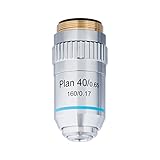All Categories


Mammal Transitional Epithelium Slide, 7 m, H&E
Share Tweet








Mammal Transitional Epithelium Slide, 7 m, H&E Features
-
This microscope slide shows a section of mammal transitional epithelium from a cat or dog ureter
-
It is stained with hematoxylin and eosin for easy viewing.
-
When you shop with Carolina, you're not alone! All of our products are backed by unparalleled technical support, available from 8am to 6:30pm, ET, Monday through Friday. Live chat is available from 8am to 5:30pm ET, Monday-Friday. Contact information (Live Chat, email, and phone) is provided after placing your order at Amazon.
About Mammal Transitional Epithelium Slide, 7 M, H&E
Mammal Transitional Epithelium Slide, 7 m, H&E. Transitional epithelium is stratified tissue (2 or more cell layers) found in the ureters and bladder. It is unique due to its ability to stretch and contract. The basal layer of the tissue contains cuboidal (cube-shaped) or columnar (column-shaped) cells. The superficial layer, however, can vary from cuboidal to squamous (flat), depending on how far it is stretched. This slide shows a section of mammal transitional epithelium from a cat or dog ureter, stained with hematoxylin and eosin. Students can easily view the lumen and superficial and basal layers of the transitional epithelium, plus the lamina propria of the ureter. Use the slide to differentiate between cell shapes, as well as for teaching the location and function of tissue types. Epithelial tissue covers or lines body surfaces as well as serving to absorb, filtrate, protect, and secrete various substances. The tissue is classified by the number of cell layers it has (simple=1 cell layer, stratified=more than 1 cell layer) and the shape of the cells (squamous=flat, cuboidal=cube-shaped, columnar=column-shaped).























